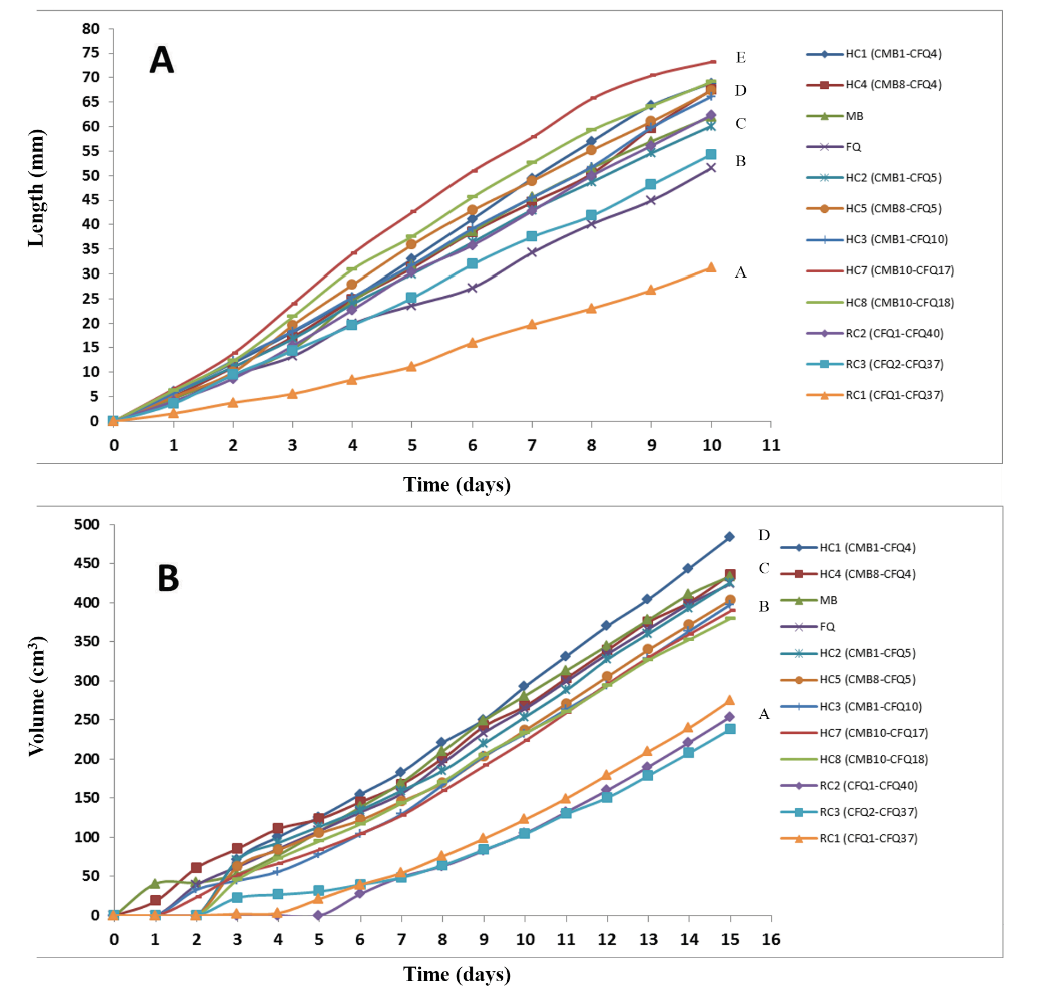 |
|
Improved strains of P. eryngii were developed by dedikaryotization of commercial strains and production parameters for its cultivation were optimized for local conditions. A wheat straw (45%) substrate with sawdust (20%), wheat bran (16%) and gluten (5%) packed in 3.5 kg bags produced higher BE (103%) than a cotton waste substrate (BE=74%). Incubation for 21 days was enough and cold treatment or scratching of substrate resulted unnecessary. P. eryngii was dedikaryotized by blending mycelium suspensions (300 seconds) and inoculation 50 $\mu$L homogenate into solutions with 20 g/L glucose and peptone. In two dedikaryotization experiments, both component monokaryons (neohaplonts) were recovered from strains FQ and MB. Hybrids and reconstructed parental dikaryons were obtained by mating neohaplonts. After the first dedikaryotization experiment, the parental strains produced lower BE (103, 84%) than reconstructed strains (183, 101%) and two hybrids (106, 174%). Following a second dedikaryotization, 17 neohaplonts were mated to produce 3 reconstructed strains and 7 hybrids. Their growth curves were determined on MEA agar and wheat. The Baranyi model showed the best adjustment to growth curves and allowed to separate them into statistically different groups and to calculate the corresponding kinetic parameters (μmax, λ) on MEA agar and wheat.
Keywords: Pleurotus, hybrids, dedikaryotization, production.
|
|
 |

